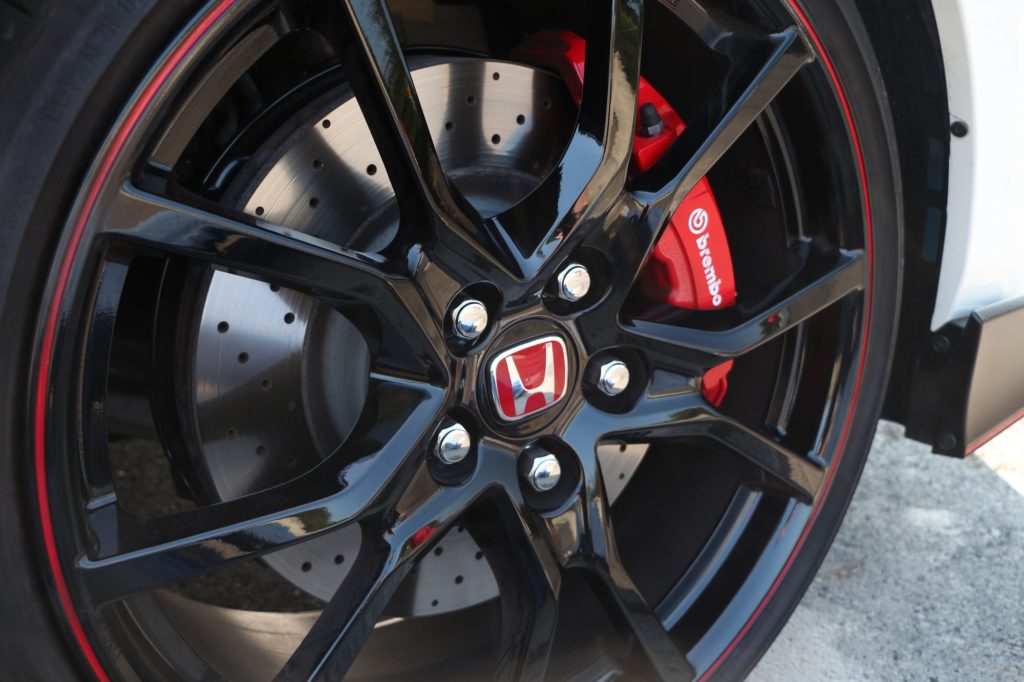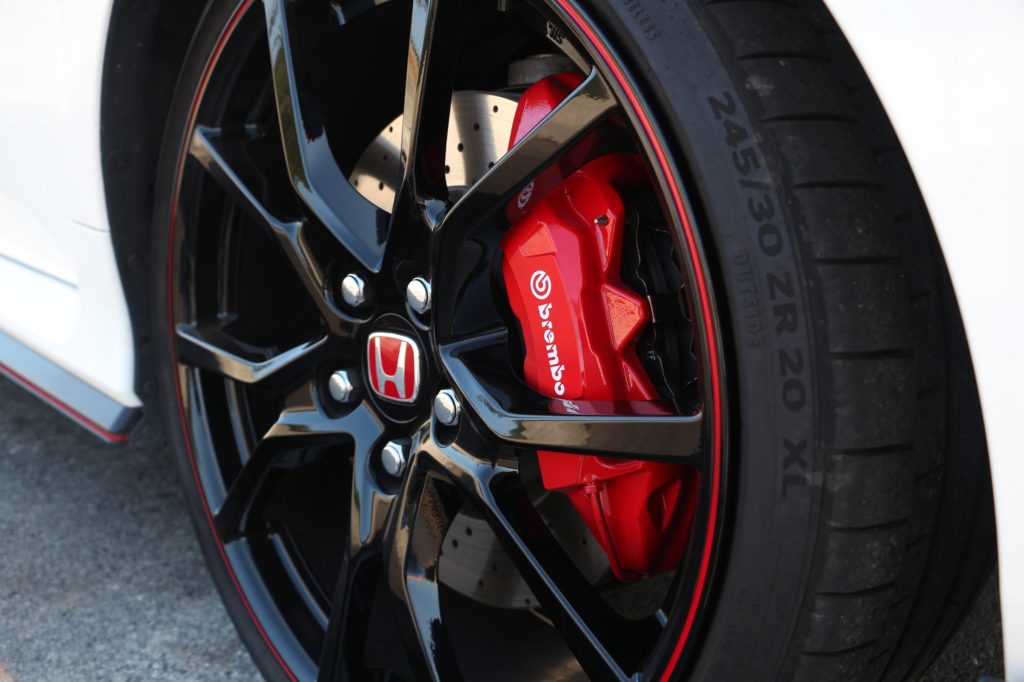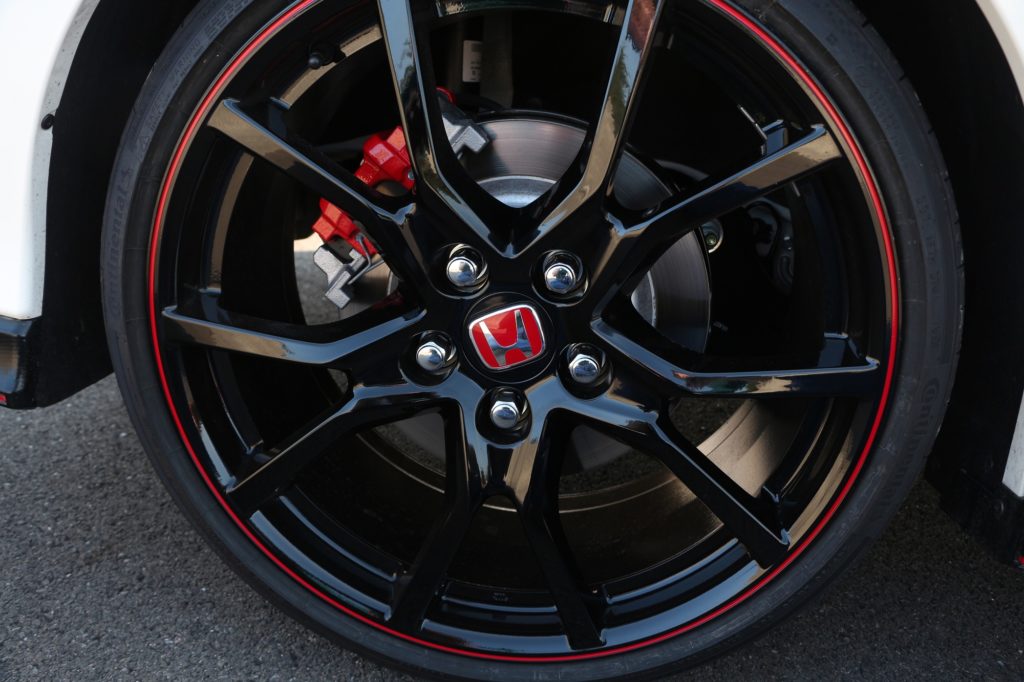2017 Honda Civic Type R Track Tested!

The K20C1 engine is amazing.
The K20C1 engine is a beast of an engine, and Honda is clearly underrating what it’s capable of. My butt dyno says it’s closer to 320-330 horsepower than the 306 Honda advertises. It pulls hard to the 7,000 RPM redline, with a minor softening of the power delivery around 6,500 revs. The powerband is broad, too, if you load the engine up, the turbo will happily spool and deliver a wallop of torque by 2,000 RPM. Though, don’t shortchange yourself on opportunities to row through the gears, because the 6-speed transmission is a joy to operate.
It’s a pretty smooth operator, to boot, feeling pretty refined even as you zing it to the red line. The least refined trait is the direct fuel injection system ticking away under the hood, but that’s nothing new, and is a trait of all direct-injected engines.

Speaking of the sound, it’s not half bad! This is something that worried me after driving the Civic Si. That is a damn fine sport compact, but was just too quiet when stomping on the go pedal. The Type R offers a distinctly turbocharged sound, like a rabid sewing machine. Honda four cylinders have always had a nice metallic thrum, and the K20C1 is no exception. The diverter valve (read: blow-off valve) also makes itself known whenever you lift off throttle, which is a nice touch. That said, the exhaust is, effectively, silent, so all of the go-fast noises are coming from the engine bay, and not the exhaust. Potential buyers may be enticed into hacking off one of the mufflers behind the Type R’s fancy tail pipes.
The brakes are superb.
Not a single issue, or instance of fade. The brake pedal was rock solid all day, and offered good communication and feedback through the pedal. I am a brake killer, always have been, likely always will be. I have blown out more calipers, cracked more rotors, burned more brake pads down to the backing plates, and boiled more brake fluid than most. My antics become something of a local track day meme, with friends giving me a “No Brake Jake” warning sticker for the back of my car. If I didn’t get brake fade that is really saying something.
The hardware at play is solid. Tucked behind the ridiculously oversized 20″ wheels are brakes by Brembo. (For the record, 18″ wheels will clear the brakes.) The front setup is a large, ventilated and drilled disc, measuring 13.8″ in diameter and 1.3″ in thickness, with a four-piston caliper. Rear braking is handled by a notably smaller, 12″ diameter solid disc with a traditional single-piston caliper. I know that the front brakes are doing most of the work, but finding a small, non-ventilated rotor out back was still surprising. That said, the efficacy can’t be denied. If the brakes work, the brakes work. Fun fact: Honda went as far as modifying the brake booster to improve the driver feedback.
The chassis tweaks and suspension are phenomenal.
As is the way with a Type R model, the FK8 rides on a bespoke suspension setup. Adaptive dampers are standard equipment, and work in the background, continuously adapting to changes in the pavement, available tire grip and the driver’s inputs. Much like the Si, they are sublime, though, naturally, these are much “smarter” than the shocks used in the Si. Likewise, almost everything is seemingly improved over the standard car. In fact, there are only a few suspension bushings and control arm design that are shared with lesser Civics. From the suspension uprights outward, big changes are at play.
The Civic Type R utilizes a dual-axis front suspension. I’ll try to minimize the technical jargon (we are doing an exclusive article on the more advanced concepts), but in short, due to the way the the strut and control arm is mounted to the knuckle, torque steer is minimized and the front suspension geometry is massively improved for performance driving. Speaking of which, those fancy uprights come with a larger hub to better handle the stresses that will be put upon it. Therefore, the CTR rolls with a 5×120 wheel bolt pattern, like what you find on Corvettes, BMWs and some Acura products. So, no, you can’t just bolt up the Type R wheels to the Civic Sport hatchback and pretend.
continue…



